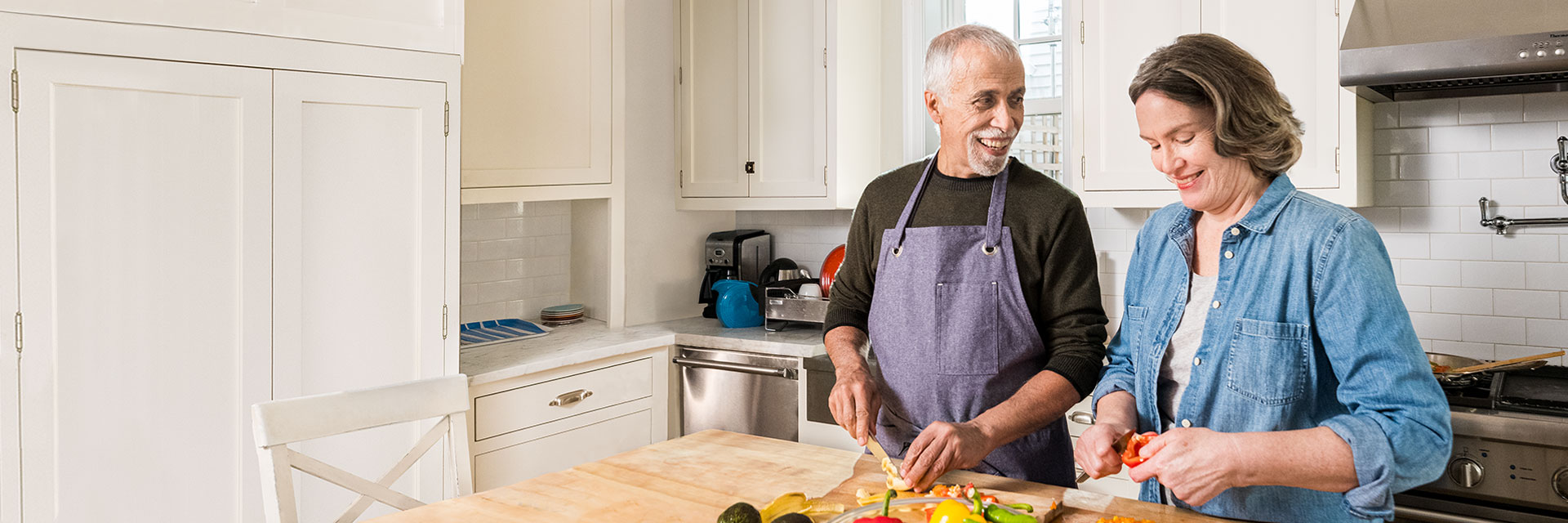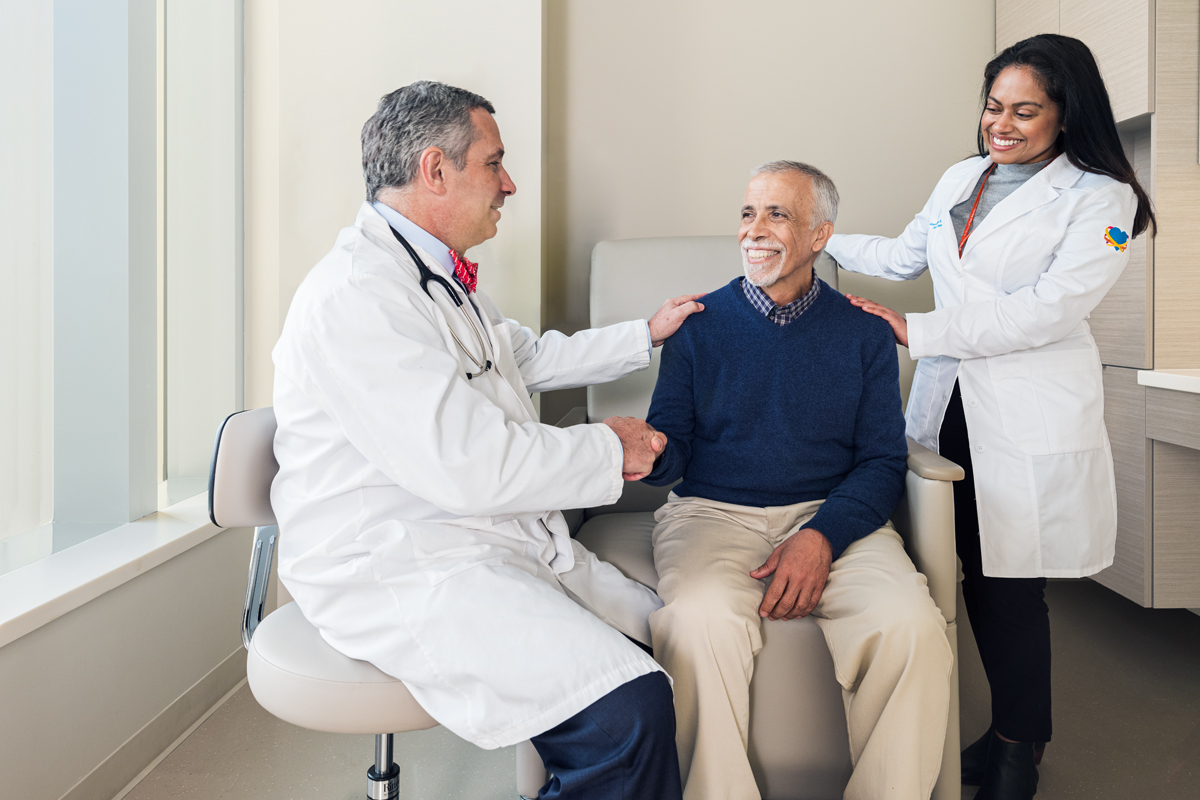
Cancer was no match for Ricardo.
Savoring Favorite Foods — and Life! — after a Bone Marrow Transplant: Ricardo’s Story
“I remember thinking, That cannot be right,” recalls Ricardo Lopez-Torrijos. “I’d had a very healthy lifestyle for many years.”
Those words rang in his head after he was diagnosed with cancer in 2014. The news came as a shock to Ricardo and his wife of 26 years, Laura. The two of them could often be found hiking in the mountains near their Albany, New York, home with their yellow Labrador, Marlena, or cooking up healthy Latin dishes, such as black beans with squash and rice. Cancer wasn’t on his mind.
When Ricardo started having pain in his torso in the spring of 2014, he went to his doctor, who did blood work and saw something irregular in the results. She referred him to a local cancer specialist who said Ricardo had multiple myeloma, a type of blood cancer.
Multiple myeloma grows from the type of white blood cells called plasma cells. Normal plasma cells in the bone marrow can develop genetic mutations that result in multiple myeloma.
Ricardo, whose first language is Spanish, wanted to be an active participant in his care. He researched the disease and learned some new words in English so he could communicate with his doctors more thoroughly.
Starting Treatment
The first step in treating multiple myeloma is usually induction therapy. This uses chemotherapy and other medicines to reduce the number of plasma cells in the bone marrow and the proteins that plasma cells make. Ricardo started induction therapy near his home shortly after he was diagnosed. After that, most people go on to receive a bone marrow transplant. Also known as a stem cell transplant, this procedure wipes a person’s existing immune system clean and builds it back up from scratch.
When Ricardo learned he would need a bone marrow transplant, he thought through his options. A transplant is an intensive procedure with a monthslong recovery, and he wanted the best care possible.
In his research, he learned that some hospitals carry a Comprehensive Cancer Center designation from the National Cancer Institute. This classification means that these institutions are recognized for their patient care, resources, and research into cancer breakthroughs. Ricardo saw that Memorial Sloan Kettering is one such center. That, coupled with having relatives on Long Island whom he could see after treatment, helped him decide to come to MSK for an appointment.
The Right Care for Ricardo
In April 2014, Ricardo had an appointment with Sergio Giralt, Chief of the Adult Bone Marrow Transplant Service at MSK. Dr. Giralt has cared for thousands of people who need bone marrow transplants and pioneered many advances in the field. Additionally, to Ricardo’s surprise, Dr. Giralt also speaks Spanish.
“He could understand me,” says Ricardo, now 64. “When you are sick, you feel very vulnerable. It was easier for me to express some things in Spanish.”
“He is Colombian, and I grew up in Venezuela, so there are a lot of points of commonality and connection,” Dr. Giralt adds. Ricardo also appreciated that Dr. Giralt used simple language to describe the illness and how it could be treated.
“He gave good, textbook answers, not only in that they were correct but in that they were so well expressed and clear,” Ricardo says. “When he spoke, I could understand what he was telling me. That was very important for me.
Dr. Giralt walked Ricardo and Laura, who would be caring for Ricardo during treatment, through the transplant process. Ricardo and Dr. Giralt knew it was important for Laura to be involved in the conversations as both his wife and his caregiver.
“The caregiver in an outpatient transplant plays a major role,” Ricardo says. “Laura had to take training and read through reams of materials.”
Ricardo would start with three weeks of medicine to clean out his immune system. Then he would have the actual transplant, which would take place in an outpatient setting. That’d mean Ricardo would go home at the end of treatment each day. This is very different from how bone marrow transplants used to be, when they required extended hospital stays.
“We’re trying to make transplants a lot more gentle,” Dr. Giralt says. “With better antibiotics and a less intense regimen comes quicker recovery. We can now do many transplants on an outpatient basis.”
Transplant and Recovery
Ricardo started the transplant process in July 2014 and received his new immune system over 12 days in August. He was admitted to the hospital once, for two days, after developing a fever.

For the following two months, he recovered in an apartment near Memorial Sloan Kettering with Laura by his side. Today, some MSK patients can recover at the 75th Street Patient Residence. The residence was built to keep patients and caregivers together and comfortable during recovery. Since daily trips back to the hospital are part of the follow-up care after a bone marrow transplant, this location smooths the disruption of those visits.
After the transplant, Ricardo had to be very careful in his recovery. His immune system was quite delicate, comparable to that of a newborn, so he had to wear a mask and gloves to protect him from germs for four months.
As he recovered, multiple members of Ricardo’s family came to visit and take turns caring for him. Laura cooked for him daily.
“I was very lucky in that I could still eat, and I love eating good food,” he says. “I love walking, and we walked every day from the hospital to a nearby park. I looked forward to that.”
Ricardo also took part in a clinical trial studying acupuncture’s effect on recovery.
“I did it for the opportunity to help,” he says. “The results indicated that it did help me.”
Relishing Life
Over time, the frequency of his visits back to MSK lessened, and Ricardo returned home upstate. He started on oral chemotherapy to keep the disease at bay, and he currently has very little residual disease. The medicine has made him less energetic than before, but he has learned to adapt and is still able to do the things he loves, like walk, eat home-cooked meals, and work part-time.
“You learn to live in the new circumstances,” he says. “I still have a very good quality of life. I am not in pain, I don’t have to go to the hospital every day, and I can still do things.”
Because people with multiple myeloma have an increased risk of developing a second type of cancer, Ricardo comes to MSK for checkups every three months. He says his experience has taught him to savor his life.
“I learned that you should have a lifestyle that makes you feel alive,” he says. “And that you should enjoy every minute.”



